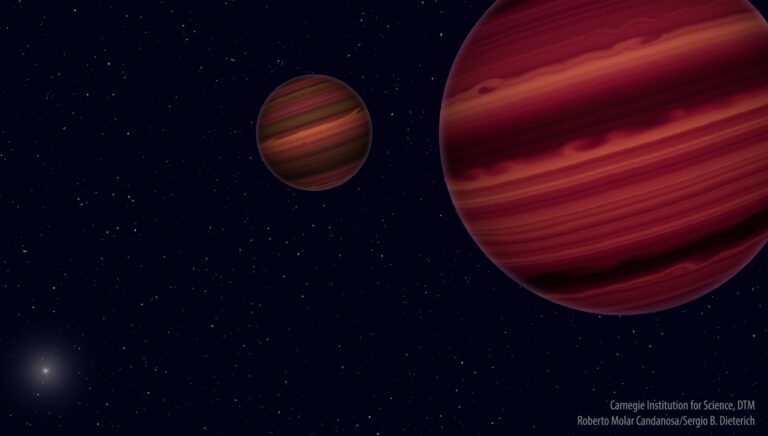Two rogue planets, each with the mass of a few Jupiters, form the lowest-mass binary system that has been identified to date.
An object earlier described as a free-floating, big Jupiter analog is actually two objects, each with the mass of several Jupiters. This binary system has the lowest mass we’ve ever discovered.
Tracking Down Ages
Brown dwarfs these are stars with a mass of below ~75-80 Jupiter masses and incapable of nuclear fusion of hydrogen. These objects have given us an opportunity to make observations about the development of stars and their models for the atmosphere; however, to appreciate these observations, we must have the ability to compute the dwarfs’ mass and age. However, this is quite cumbersome. Brown dwarfs cool constantly as they age, resulting in observational degeneracy: It is quite possible that dwarfs of different mass and age could have same brightness and thus one cannot determine what these objects are like from what is observed. We can get out of this nuance by independently measuring the mass of dwarfs. One of the methods is to search for brown dwarfs that are part of another stellar association called the ‘moving groups’. Due to this reason the age of a brown dwarf may be estimated by using the ages of other stars in the association which are easier to define because all stars in the association are of comparable age as the brown dwarf.
An Unusual Binary
A team of scientists led by William Best (Institute for Astronomy, University of Hawaii) investigated such an object: the highly red L7 dwarf 2MASS J11193254-1137466 with low gravity that could be a member of TW Hydrae Association. However, using the sophisticated adaptive optics on the Keck II telescope in Hawaii, the team determined that this Jupiter-like object was hiding something: what was really created was one object of equal instability rotating around another object of equal instability. To know more about this strange binary, Best and coworkers used parameters like the position of the objects on the celestial plane, their proper motion, and radial velocity to compute the likelihood that 2MASS J11193254-1137466AB is a member of the TW Hydrae Association of stars. This led to their realization that, there was a 80% chance that it fell under this group. The authors also predicted that the primary binary separation should be about 3. 9 AU based on their proximity to the group, which is an estimated 160 light-years away. The membership of the binary in TW Hydrae Association also provides information that binary is 10 million years old. This allowed Best and colleagues to derive the mass and the effective temperature of the components using their luminosity and models of stellar evolution.

Planetary-Mass Objects
The scientists discovered that each component has a tiny ~3.7 Jupiter masses, putting them in the ambiguous category between planets and stars. While the International Astronomical Union considers objects with masses less than the minimum required to fuse deuterium (about 13 Jupiter masses) to be planets, other classifications differ based on composition, temperature, and origin. According to the authors, the binary consists of two objects with planetary masses.

By any criterion, 2MASS J11193254-1137466AB is the least massive binary known so far. They also contain some of the lowest masses of free-floating brown dwarfs due to individual masses of the components. Consequently, this system will act as a control for the future testing of other evolutionary and atmospheric models relevant to low-mass stars.
Do not forget to share your opinion with us to provide you with the best posts !




0 Comments